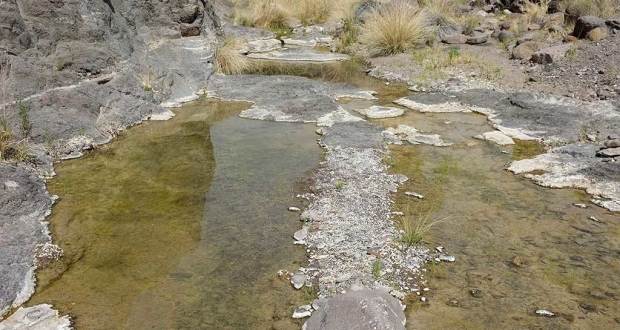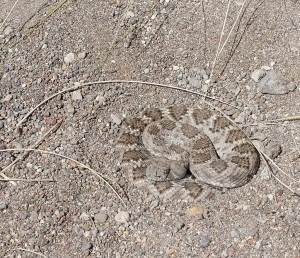At a glance
Distance: 9.8 miles roundtrip
Elevation change: 950 feet
Hiking time: 3-4 hours
Highlights: Scenic trail parallels a creek bed and ends at a tall – often dry – waterfall
Difficulty: ★★★★☆
A relatively flat stroll up a creek bed with more strenuous rock scrambling in the second half
Trail conditions: ★★★☆☆
The path is smooth until the rocky upper reaches of the canyon
Scenery: ★★★☆☆
Colorful flowers in the spring, pristine pools of water and a rocky box canyon
Solitude: ★★☆☆☆
All the trails at Big Bend Ranch get less traffic than most other parks
Other reviews
• Video of the upper trail
The trek through the southern Bocefillos Mountains is much shorter and less strenuous than it’s sibling, the Rancherias Canyon Loop, which is a backpacking trip of more than 19 miles. The turnoff to the longer trail is about 0.7 miles in.
The West Rancherias Canyon Trail dips down from the trailhead to follow a dry creek bed before turning onto an old wagon road for a short distance. From there it tumbles down into Rancherias Canyon, tracking a mostly dry stream bed along the canyon floor.The trail is marked by cairns so elaborate at some points they look as if they were built by a stonemason.
Farther ahead, you notice a community of grasses, cattails and cottonwoods peeking out from between the boulders. As you get closer, you see why: a series of ponds fed by a shallow spring. The ponds draw a diversity of wildlife – from javelina to the diamondback rattlesnake that I almost missed in the middle of the path.
In the spring, the muted colors of the canyon are punctuated here and there by red, yellow and lavender flowers.
Further upstream, the climb gets steeper and more difficult as you navigate the last stretch to the waterfall.
• • •








